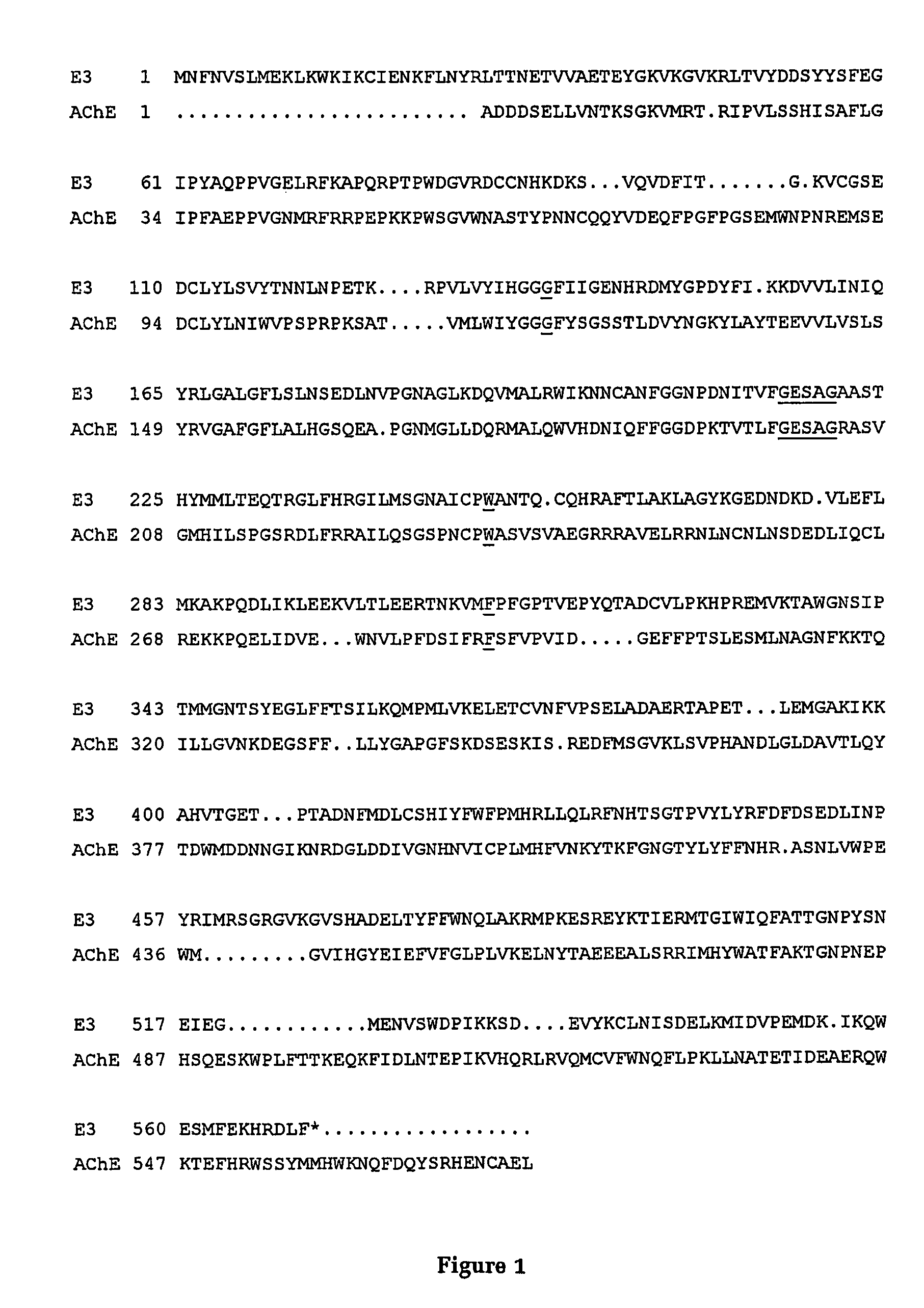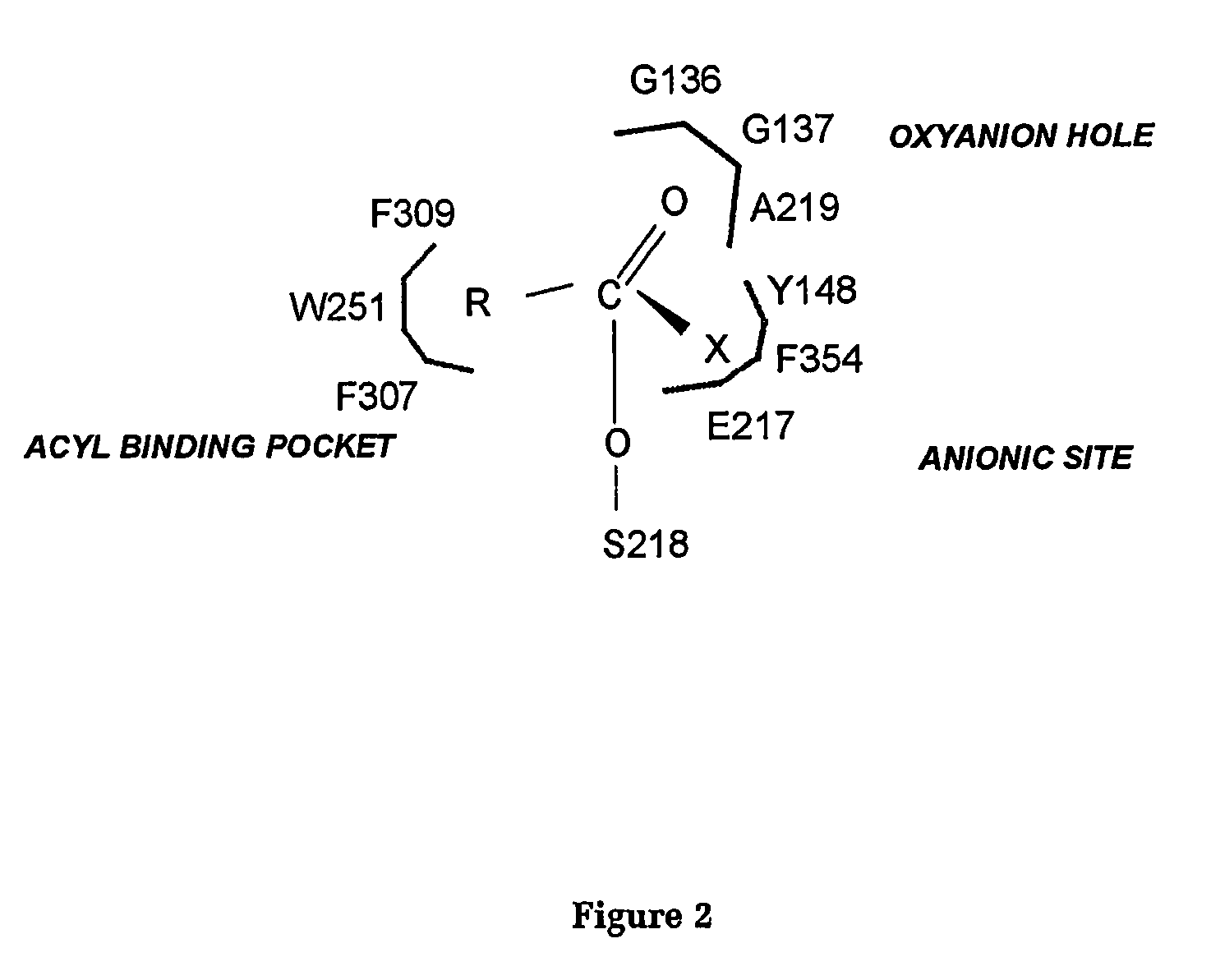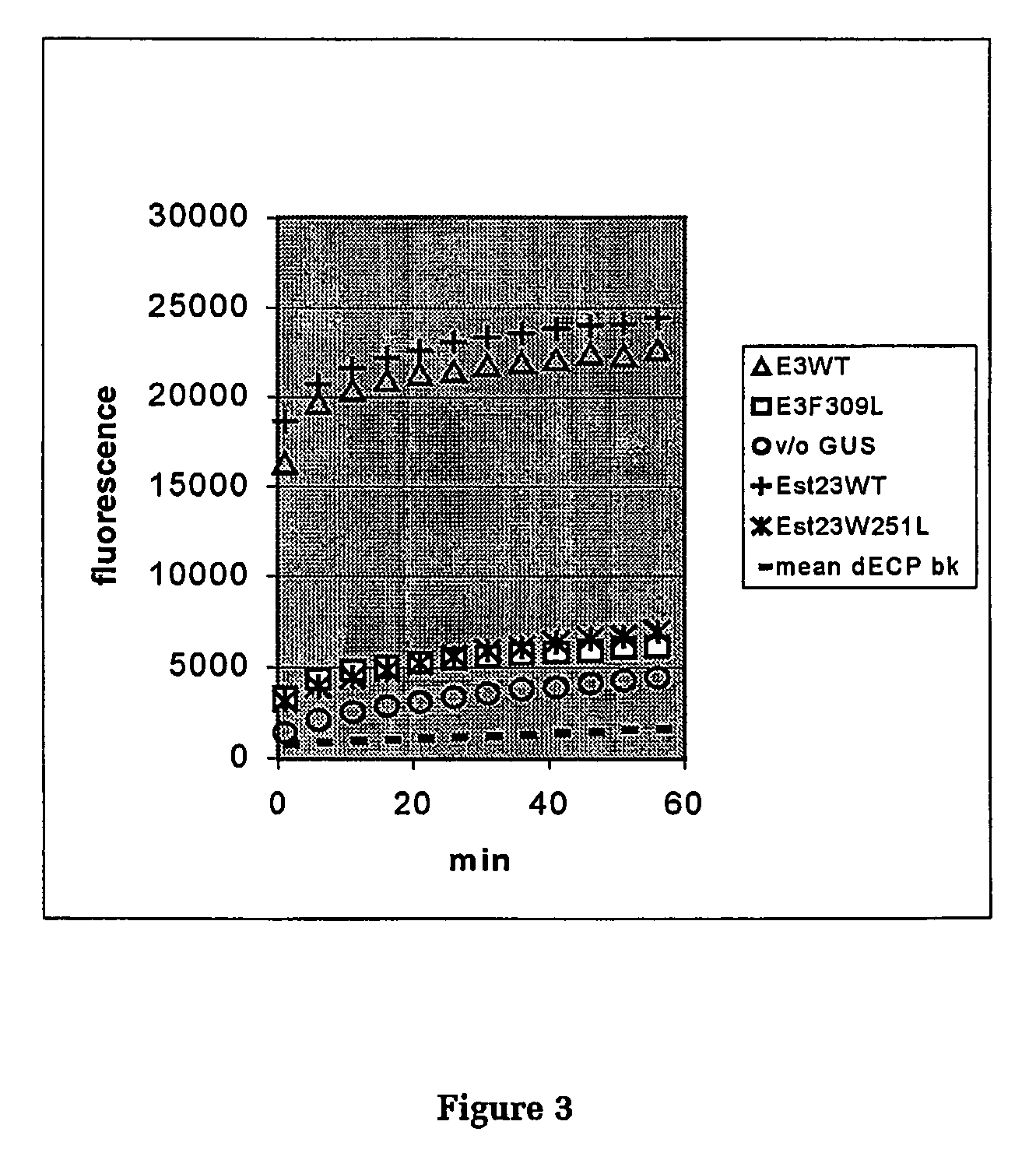Degradation of hydrophobic ester pesticides and toxins
a technology of esterase and hydrophobic ester, which is applied in the field of enzymes and methods for degrading hydrophobic ester pesticides and toxins, can solve the problems of pyrethroid pesticide residues being undesirable contaminants, carpet dye baths and animal dips being contaminated, and other problems, to achieve the effect of altering the stereospecificity of esterase and enhancing hydrolytic activity
- Summary
- Abstract
- Description
- Claims
- Application Information
AI Technical Summary
Benefits of technology
Problems solved by technology
Method used
Image
Examples
example 1
Construction of Mutants
[0108]An alignment of the amino acid sequence of the E3 enzyme with that of a vertebrate acetylcholinesterase (TcAChE, for which the three dimensional structure is known; Sussman et al., 1991) is given in FIG. 1. Mutants of E3 and EST23 were constructed using the QuickChange™ Site-Directed Mutagenesis Kit of Stratagene and are named according to the number of the residue that has been changed, and the nature of that change. For example, mutant E3W251L is an E3 mutant in which the Trp residue at position 251 in the wild-type enzyme (i.e. E3WT) has been mutated to Leu.
[0109]E3 and EST23 enzymes were expressed using the baculovirus expression system as described by Newcomb et al. (1997), but using the HyQ SFX-insect serum-free medium (HyClone) for increased expression. Cell extracts were prepared by lysing the cells at a concentration of 108 cells ml−1 in 0.1M phosphate buffer pH 7.0 containing 0.05% Triton X-100. Extracts were then titrated for the number of est...
example 2
Enzyme Titrations
[0122]Four 100 μl reactions were set up for each expressed esterase in microplate columns 1-4:[0123]plate well blank containing 0.025% Triton X-100, 0.1M phosphate buffer pH 7.0;[0124]substrate blank containing 100 μM dECP in 0.025% Triton X-100, 0.1M phosphate buffer pH 7.0;[0125]cell blank containing 50 μl cell extract mixed 1:1 with 0.1M phosphate buffer pH 7.0;[0126]titration reaction containing 50 μl cell extract mixed 1:1 with 0.1M phosphate buffer pH 7.0 containing 200 μM dECP.
[0127]All components except dECP (freshly prepared at a concentration of 200 μM in buffer) were placed in the wells. Several enzymes were assayed simultaneously in a plate, and the reactions were started by adding dECP simultaneously to the 2nd and 4th wells down a column. The interval to the first reading (typically 1 minute) was noted for the subsequent calculations.
[0128]The mean value for the plate well blank (A) was subtracted from all readings before further calculations. Prelimin...
example 3
Permethrin Hydrolysis Assays
[0131]Expressed enzymes were tested for permethrin hydrolytic activity using a radiometric partition assay for acid-labelled compounds, or a TLC based assay for those labelled in the alcohol moiety (Devonshire and Moores, 1982). Features of the assays include keeping the concentration of permethrin below its published solubility in aqueous solution (0.5 μM, the concentration of detergent (used to extract the enzyme from the insect cells in which it is expressed) below the critical micelle concentration (0.02% for Triton X100), and performing the assays quickly (ie within 10-30 minutes) to minimise the substrate sticking to the walls of the assay tubes (glass tubes were used to minimise stickiness). At these permethrin concentrations the enzyme is not saturated by the substrate, so Km values could not be determined. However, specificity constants (kcat / Km) could be calculated accurately for each of the enzymes with permethrin activity, which allows direct ...
PUM
| Property | Measurement | Unit |
|---|---|---|
| time | aaaaa | aaaaa |
| pKa | aaaaa | aaaaa |
| pKa | aaaaa | aaaaa |
Abstract
Description
Claims
Application Information
 Login to View More
Login to View More - R&D
- Intellectual Property
- Life Sciences
- Materials
- Tech Scout
- Unparalleled Data Quality
- Higher Quality Content
- 60% Fewer Hallucinations
Browse by: Latest US Patents, China's latest patents, Technical Efficacy Thesaurus, Application Domain, Technology Topic, Popular Technical Reports.
© 2025 PatSnap. All rights reserved.Legal|Privacy policy|Modern Slavery Act Transparency Statement|Sitemap|About US| Contact US: help@patsnap.com



